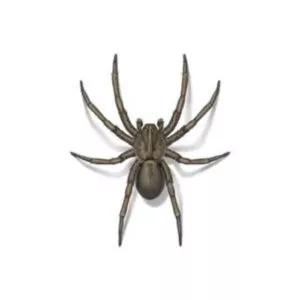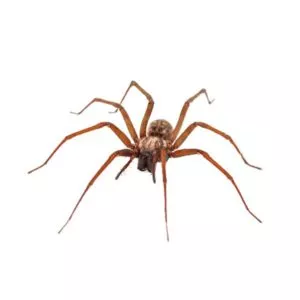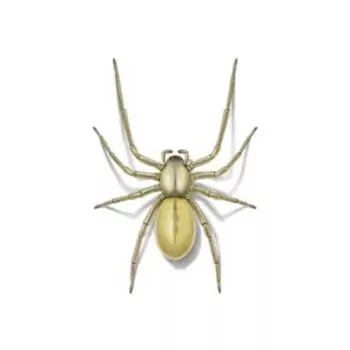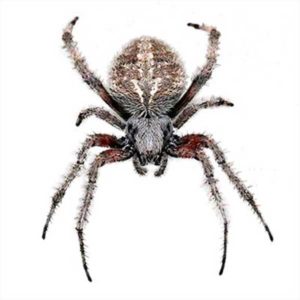Spiders in Virginia: A Guide to Common Species
With over 750 species of spiders found in the state, Virginia is home to an impressive diversity of these amazing arachnids Some are harmless to humans, while others pack a venomous bite This article will explore 44 of the most common spiders you may encounter if you live in or visit Virginia.
Overview
Virginia’s temperate forests, fields, wetlands, and urban areas provide ideal habitat for a wide variety of spiders. The most common species belong to groups like orb weavers, jumping spiders, crab spiders, wolf spiders, and web weavers. Some spin impressive webs to trap prey, while others hunt actively.
While a few venomous species like the Southern black widow do reside in Virginia, the vast majority of spiders pose no threat to humans. Bites are uncommon, and if they do occur, they usually only cause mild pain, redness and swelling. Some people may experience severe allergic reactions, however. Only 2 species found in Virginia are considered medically significant – the black widow and the brown recluse spider.
Below you’ll find 44 of the most frequently encountered spiders in Virginia along with tips on identification habitat, behavior and more.
Common Spiders in Virginia
- Yellow Garden Spider
Scientific Name: Argiope aurantia
Details:
- Large orb weaver up to 1.1 inches long
- Females have yellow and black striped abdomens, males are smaller and brown
- Build large, circular webs in gardens, fields and forests
- Venom is not dangerous, but may cause mild sting if handled
- Orchard Orbweaver
Scientific Name: Leucauge venusta
Details:
- Oval body marked with orange triangles
- Weave orb webs in orchards and trees
- Harmless to humans
- Tan Jumping Spider
Scientific Name: Platycryptus undatus
Details:
- Small, hairy spider that jumps to catch prey
- Found on plants, rocks, walls
- Mild venom, may bite if handled roughly
- Spotted Orbweaver
Scientific Name: Neoscona crucifera
Details:
- Orange or brown with white spotted pattern
- Build large circular webs in gardens and woods
- Nocturnal hunter, spends day hidden in web
- Harmless to humans
- Bold Jumping Spider
Scientific Name: Phidippus audax
Details:
- Small, black with white markings
- Jumps up to 4 times body length to hunt
- Found in homes, offices, vehicles
- Venom no worse than bee sting
- Dark Fishing Spider
Scientific Name: Dolomedes tenebrosus
Details:
- Large brown spider up to 1 inch long
- Found near water and moist woods
- Painful but not medically significant bite
- American Nursery Web Spider
Scientific Name: Pisaurina mira
Details:
- Carries egg sac in mouth until eggs hatch
- Brown with dark stripe on back
- Found in shrubs near water
- Arrowhead Orbweaver
Scientific Name: Verrucosa arenata
Details:
- Triangular abdomen with arrow markings
- Create circular webs in shady areas
- Harmless
- Marbled Orbweaver
Scientific Name: Araneus marmoreus
Details:
- Color variable – black, orange, yellow patterns
- Build large webs in shrubs and trees
- Harmless, drops from web if threatened
- Spined Micrathena
Scientific Name: Micrathena gracilis
Details:
- Females have spiny abdomen for defense
- Color variable, found in forests
- Harmless
- Common House Spider
Scientific Name: Parasteatoda tepidariorum
Details:
- Build messy, tangled webs in homes
- Hangs upside down waiting for prey
- Non-aggressive, venom not dangerous
- Magnolia Green Jumping Spider
Scientific Name: Lyssomanes viridis
Details:
- Slender green spider that lives on trees
- Jumps to hunt insects and other spiders
- Rarely bites
- Furrow Orbweaver
Scientific Name: Larinioides cornutus
Details:
- Large oval abdomen marked with arrow
- Nocturnal hunter, spends day in web
- Found in shrubs and grass near water
- Golden Jumping Spider
Scientific Name: Phidippus aurantius
Details:
- Iridescent green/gold, males have stripes
- Jumps to hunt, found on plants
- Venom no worse than bee sting
- Arrow-shaped Orbweaver
Scientific Name: Micrathena sagittata
Details:
- Distinct arrowhead-shaped abdomen
- Females have spines, found in woods
- Non-aggressive
- Arabesque Orbweaver
Scientific Name: Neoscona arabesca
Details:
- Variable colors with zig-zag pattern
- Large circular webs in gardens and woods
- Not aggressive toward humans
- Rabid Wolf Spider
Scientific Name: Rabidosa rabida
Details:
- Fast moving with erratic movements
- Brown with stripes on head/abdomen
- Painful but not dangerous bite
- Six-spotted Fishing Spider
Scientific Name: Dolomedes triton
Details:
- Brown spider with white spots on abdomen
- Found near water
- Large but not aggressive
- American Green Crab Spider
Scientific Name: Misumenoides oblongus
Details:
- Small green spider that hides in flowers
- Waits to ambush pollinating insects
- Rarely bites humans
- Eastern Parson Spider
Scientific Name: Herpyllus ecclesiasticus
Details:
- Brown with white stripe on abdomen
- Nocturnal hunter in woods and homes
- Venom may cause allergic reaction
- Long-bodied Cellar Spider
Scientific Name: Pholcus phalangioides
Details:
- Thin, cylindrical brown spider with long legs
- Build messy webs in dark corners
- Venom not dangerous to humans
- White-jawed Jumping Spider
Scientific Name: Hentzia mitrata
Details:
- Tiny gray spider with white jaws
- Found on plants and rocky areas
- Jumps away from threats
- Sylvan Jumping Spider
Scientific Name: Colonus sylvanus
Details:
- Small salticid spider of forests and trees
- Ambushes insects and jumps away if threatened
- Rarely bites humans
- Southern Black Widow Spider
Scientific Name: Latrodectus mactans
Details:
- Shiny black with red hourglass on abdomen
- Venomous bite, but rarely fatal to humans
- Found in wood piles, tree stumps, sheds
- Spotted Orbweaver
Scientific Name: Neoscona domiciliorum
Details:
- White spotted abdomen, orange/brown body
- Builds webs on buildings and porches
- Bite not dangerous to healthy humans
- Ribbon Jumping Spider
Scientific Name: Metacyrba taeniola
Details:
- Small gray spider with white bands on abdomen
- Jumps to hunt instead of building webs
- Found in forests and woodlands
- Basilica Orbweaver
Scientific Name: Mecynogea lemniscata
Details:
- Bright green, yellow and orange colors
- Large webs resemble cathedral arches
- Harmless to humans
- White-banded Crab Spider
Scientific Name: Misumenoides formosipes
Details:
- White stripe across eyes, females change color
- Ambushes insects from flowers
- Rarely bites
- White-banded Fishing Spider
Scientific Name: Dolomedes albineus
Details:
- Dark brown with distinct white bands on legs
- Found near water
- Large but not aggressive
- Triangulate Combfoot
Scientific Name: Steatoda triangulosa
Details:
- Brown spider with triangle on abdomen
- Makes tangled webs in homes and sheds
- Venom not dangerous unless allergic
- Tigrosa annexa
Scientific Name: Tigrosa annexa
Details:
- Wolf spider with stripes on legs and body
- Does not use webs, hunts prey on ground
- Painful but not dangerous bite
- Bronze Jumping Spider
Scientific Name: Eris militaris
Details:
- Metallic green/bronze with white bands
- Found in homes, crops, and old fields
- Jumps away from threats
- Spinybacked Orbweaver
Scientific Name: Gasteracantha cancriformis
Details:
- Thick spines on oval abdomen
- Varied colors, found in gardens and woods
- Harmless to humans
- Banded Garden Spider
Scientific Name: Argiope trifasciata
Details:
- White and brown striped pattern
- Large orb webs low in grass and gardens
- Harmless, not aggressive
- Bowl and Doily Spider
Scientific Name: Frontinella pyramitela
Details:
- Small brown spider with dots on abdomen
- Makes horizontal sheet webs with dome
- Found in shrubs and weedy areas
- Flea Jumping Spider
Scientific Name: Naphrys pulex
Details:
- Tiny gray spider mottled with black
- Jumps to hunt insects on plants and trees
- Too small to bite humans
- Garden Ghost Spider
Scientific Name: Hibana gracilis
Details:
- Brown and yellow with long abdomen
- Nocturnal hunter hides in leaves and webs
- Rarely encounters humans
- Canopy Jumping Spider
Scientific Name: Phidippus otiosus
Details:
- Large jumping spider found in treetops
- Dark jaws, bites only in self defense
- Not dangerous to humans
- Black-tailed Red Sheetweaver
Scientific Name: Florinda coccinea
Details:
- Bright red spider with black abdomen tip
- Makes horizontal sheet webs in grass
- Too small to bite humans
- Broad-Faced Sac Spider
Scientific Name: Trachelas tranquillus
Details:
- Bulky brown spider found in leaf litter
- Enters homes in fall seeking shelter
- Venom may cause severe reaction
- White Micrathena
Scientific Name: Micrathena mitrata
Details:
- White spider with black patches on abdomen
- Found on plants hunting for insects
- Too small to bite humans
- Peppered Jumping Spider
Scientific Name: Pelegrina galathea
Details:
- Tiny gray spider mottled with black
- Found waiting to ambush prey on plants
- Jumps away if threatened
- Tigrosa georgicola
Scientific Name: Tigrosa georgicola
Details:
- Large wolf spider with stripe on carapace
- Found on forest floor, hides under logs
- Painful but not dangerous bite
- Brilliant Jumping Spider
Scientific Name: Phidippus clarus
Details:
- Metallic green, red and brown colors
- Found in old fields waiting to ambush prey
- Jumps away if approached
As this guide demonstrates, Virginia is home to an impressive diversity of spider species perfectly adapted to habitats across the state. While a small number of venomous spiders like the Southern black widow do exist, most species pose no threat to humans. Bites are uncommon, and if they occur, usually only cause mild symptoms. With proper identification and sensible precautions, Virginians can happily coexist with their eight-legged neighbors.

Serving Henrico | Richmond | Ashland

Virginia is known for many lovely things, like flowering dogwood trees, majestic Northern Cardinals, and…spiders? We might not appreciate the spiders of Virginia as much as we do the other, more conventionally appealing aspects of our ecology, but these furry friends play an important role in our local ecosystem. So, what are the most common spiders in Virginia? Which spiders tend to stay outside, and which might end up in your home or business? If there is a spider infestation on your property, Loyal Termite & Pest Control can eradicate it at its source. But before we do that, it could help to know the species of spider you’re dealing with, which may affect the way we treat it.

- Can be found outdoors under leaf litter, or indoors in closets, basements, and garages.
- Hunt on foot as opposed to building webs.
- Females are known for carrying their young on their backs.
- Can move quickly, up to two feet a second.
- Larger in size, but less commonly seen indoors.

- Found indoors and outdoors in quiet and undisturbed areas. This may be backyards as well as sheds, attics, and other man-made structures.
- Can live up to seven years.
- Hunts through webs of crisscrossed, sticky silk. If one web doesn’t bring in enough food, it is abandoned in favor of another location.
- The most common species of spider in North America.
- Are not traditionally aggressive and will only attack if provoked. Even then, they are not venomous.

- Mainly inhabits gardens and organic debris but will come inside during the cold season.
- Builds tube/sac-shaped nests where walls meet ceilings or other walls.
- Often mistaken for the brown recluse but lacks the shape of its counterpart.
- Bites can be painful and some sac spiders have venom strong enough to harm humans.
- They are fully nocturnal and only hunt at night.

- Creates webs as wide as six feet in diameter.
- Found everywhere on earth but the Arctic and Antarctica.
- Large and often very colorful.
- Not aggressive and seldom bite human beings.
- Have poor vision and wait for the vibrations of insects caught in their web.
Loyal Termite & Pest Control for Spider Removal in Virginia
A majority of spiders in our area are not actually harmful to interact with. However, some can be quite venomous, and it can be difficult to differentiate between species with just the naked eye. You don’t want to take a chance in determining whether that black-bulbed arachnid under your awning is actually a false black widow, or if you have brown widows or sac spiders in your garden. You need a spider exterminator in Virginia that’s familiar with the different species common to our area. With Loyal Termite & Pest Control, you’re getting 60 years’ worth of experience in combating spider infestations both big and small. With our help, you’ll have one less thing to worry about so you can get back to loving everything else Virginia has to offer.
How to Identify Wolf Spiders in Virginia
FAQ
What are the most common spiders in Virginia?
In Virginia, four of the most common spiders are black widow spiders, American house spiders, brown recluse spiders, and wolf spiders.
Are there any poisonous spiders in Virginia?
The black widow spider (Latrodectus mactans) is the only poisonous spider native to Virginia.
Are brown recluse spiders in Virginia?
-
Natural Range:The brown recluse spider’s natural range reaches the tip of southwestern Virginia.
-
Isolated Populations:While not common, isolated populations have been confirmed in several locations across Virginia.
-
Misidentification:Brown recluse spiders are often misidentified, and it’s important to note that their bites do not always result in large, necrotic lesions.
-
Another spider of medical concern in Virginia is the black widow spider.
-
Other Common Spiders:Other common spiders in Virginia include wolf spiders, sac spiders, and American house spiders.
What is the most common indoor spider?
According to the National Wildlife Federation, the American house spider is the spider most commonly found in homes in the United States.
